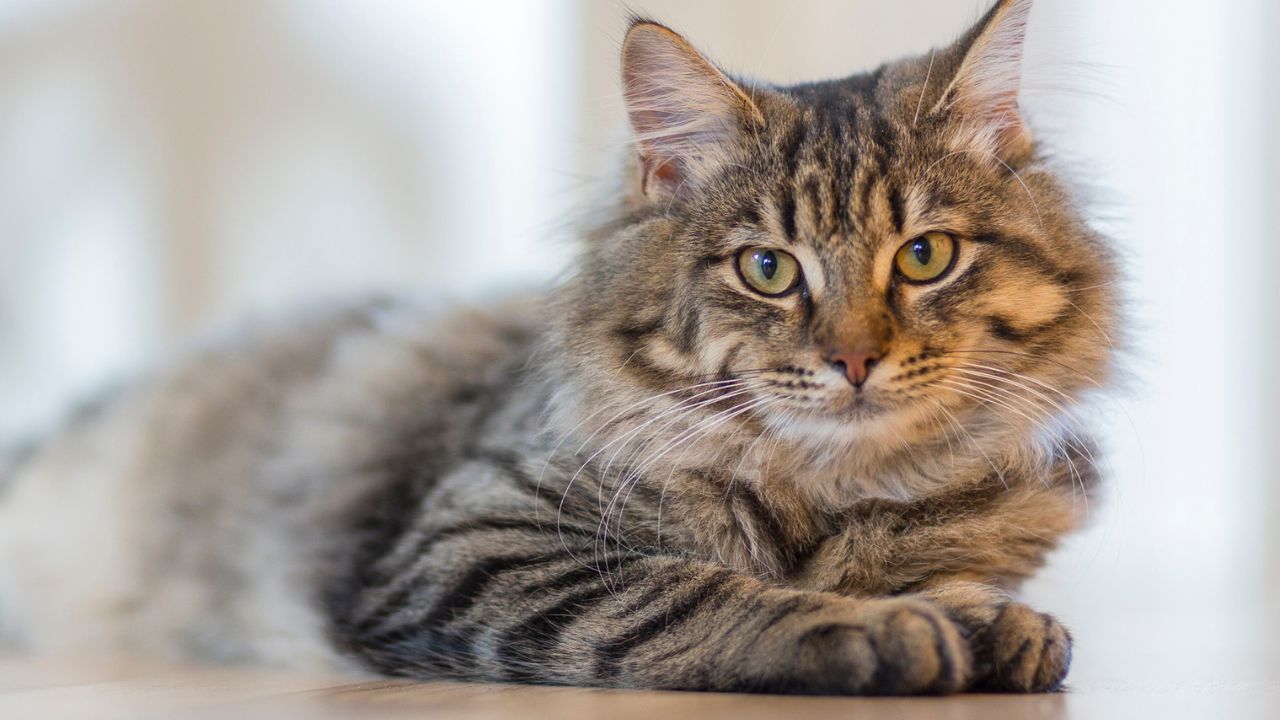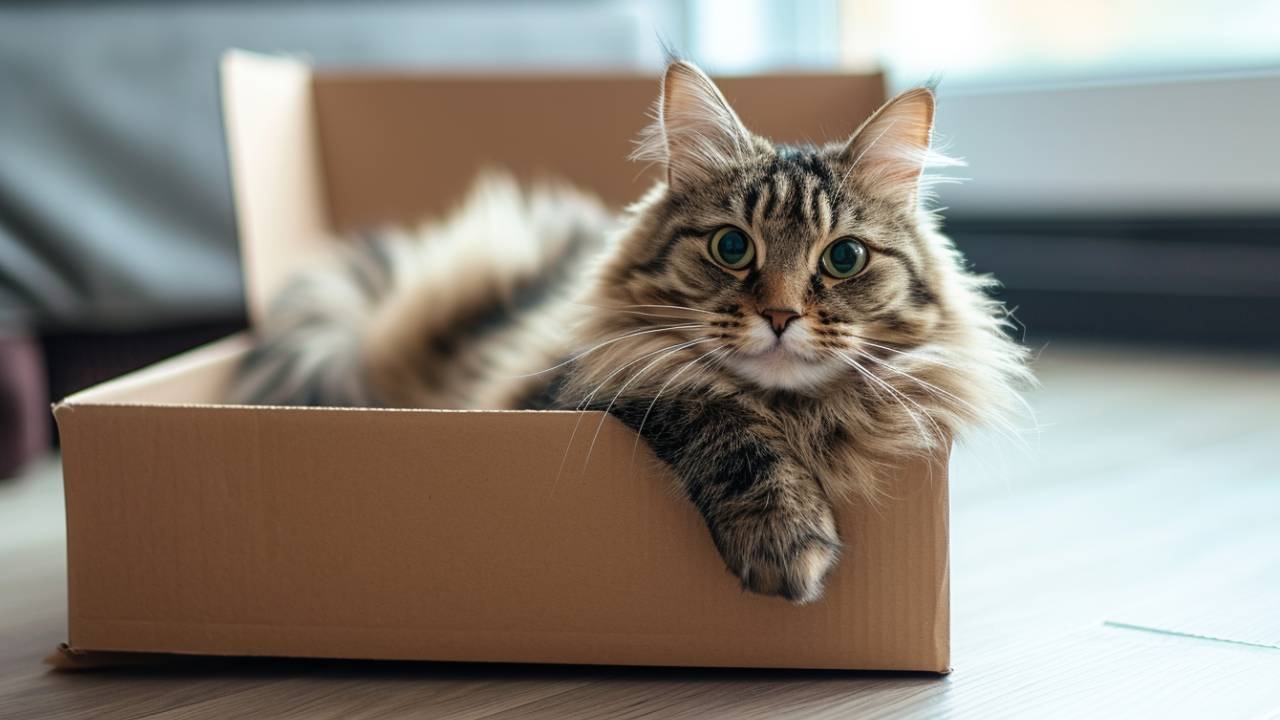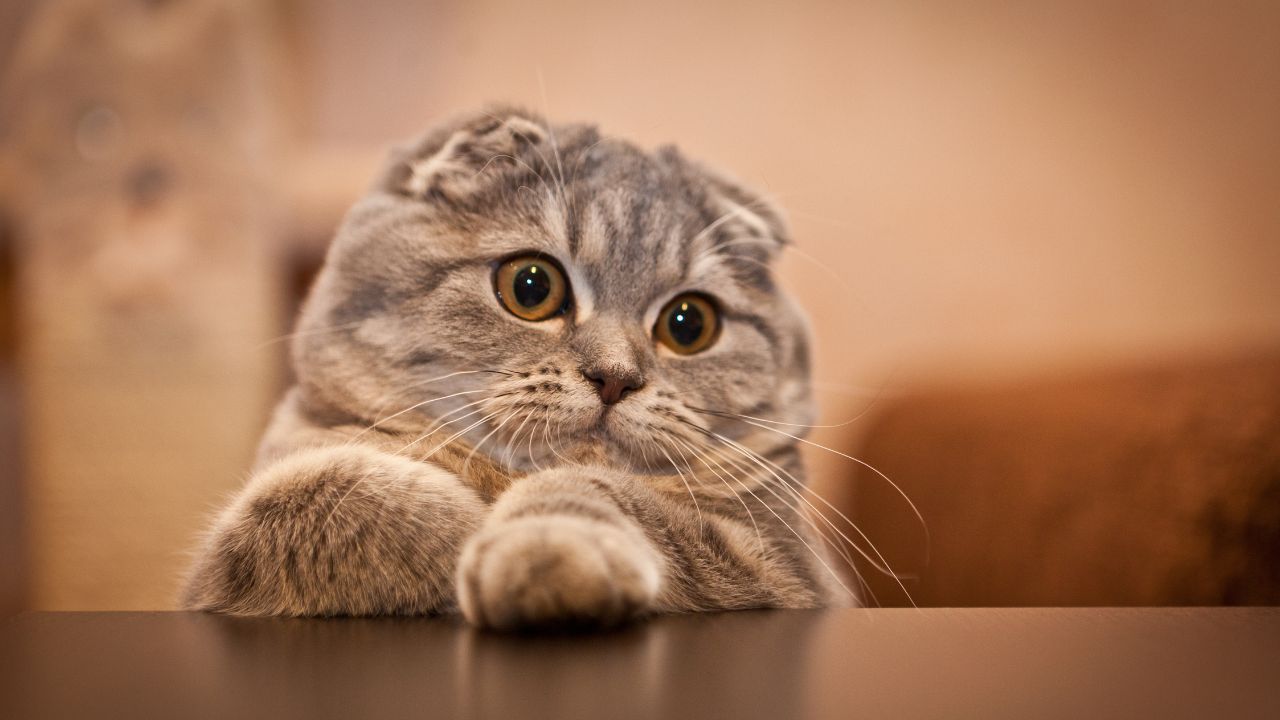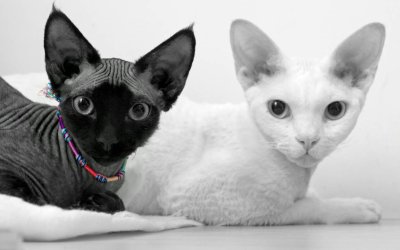Have you ever wondered how big your cat will get? While kittens start out tiny, their final size depends on several factors like breed, gender, and overall health. Some cats stay petite, while others grow into massive, fluffy giants!
Understanding the average size of a cat can help you keep track of their growth, ensure they’re at a healthy weight, and know what to expect as they mature.
So, let’s take a closer look at how big cats typically get and what influences their size.
How Big Is the Average House Cat?
The typical domestic cat falls within a certain size range, though there are always exceptions. On average, an adult cat measures:
- Weight: 8-12 lbs (3.6-5.4 kg)
- Length: 18 inches (46 cm) from nose to tail
- Height: 9-10 inches (23-25 cm) at the shoulder
Of course, these numbers can vary depending on breed, lifestyle, and genetics. Indoor cats tend to weigh a bit more due to lower activity levels, while outdoor cats may be leaner.
What Affects a Cat’s Size?
A cat’s final size isn’t just a matter of chance. Several key factors play a role in how big (or small) they’ll get:
- Breed: Some breeds, like the Maine Coon, are naturally large, while others, like the Singapura, stay tiny even as adults.
- Gender: In most cases, male cats are larger than their female counterparts, sometimes by a few pounds or inches.
- Diet & Health: A cat that receives proper nutrition during kittenhood will grow to its full potential, while malnutrition or obesity can affect its size.
- Genetics: Just like with humans, a cat’s parents are a good indicator of how big they’ll get. If both parents were large, chances are the kitten will be, too!
Cats may vary in size, but what’s most important is that they are healthy and happy—no matter how big or small they turn out to be.
Smallest and Largest Cat Breeds
Cats come in all sizes, from tiny, delicate felines to large, majestic breeds. While most domestic cats fall within the average range, some breeds stand out for being exceptionally small or impressively large.

- Smallest Cat Breed: The Singapura holds the title of the tiniest domestic cat. Weighing just 4-6 lbs and standing 6-8 inches tall, this breed is small but full of energy.
- Largest Cat Breed: The Maine Coon is the heavyweight of the cat world. These gentle giants can weigh 15-25 lbs and grow up to 40 inches long, including their fluffy tails. If you’re thinking about getting one, find out how much does a Maine Coon cost?
Honorable Mention – The Manul (Pallas’s Cat): While not a domestic breed, the Manul looks much larger than it is due to its thick fur. In reality, it’s only around the size of an average house cat!
The tallest living domestic cat is Fenrir, a Savannah cat measuring 47.83 cm (18.83 inches) tall. Fenrir was recognized by Guinness World Records in 2021 – Guinnessworldrecords.com.
The smallest cat ever recorded was Tinker Toy, a male blue point Himalayan-Persian. Fully grown, he stood just 7 cm (2.75 inches) tall and measured 19 cm (7.5 inches) in length. Tinker Toy was recognized by Guinness World Records in 1996 – Guinnessworldrecords.com.
Growth Stages: When Do Cats Stop Growing?
Cats grow rapidly in their first year, but their final size depends on their breed and genetics. Here’s a general timeline of a cat’s growth:
- Newborn (0-2 weeks): Tiny and fragile, weighing only 3-4 ounces.
- 8 Weeks: Most kittens weigh around 2 lbs and are ready for adoption.
- 6 Months: Cats are about half their adult weight, typically 5-7 lbs.
- 1 Year: Most cats reach their full size, though some large breeds keep growing.
- Beyond 1 Year: Giant breeds like Maine Coons and Ragdolls can continue growing until 3-4 years old.
Growth is just one part of a cat’s life cycle. If you’re curious about how long cats live, their lifespan varies based on breed, lifestyle, and overall care. If your cat seems smaller or larger than expected, a vet visit can help ensure they’re growing as they should.

Is My Cat Too Big or Too Small?
Since cats come in different shapes and sizes, it’s not always easy to tell if your cat is underweight or overweight. Here are some signs to look for:
🔹 Underweight Signs:
- Ribs, spine, or hip bones are easily visible or felt.
- Loss of muscle mass.
- Lethargy or lack of energy.
🔹 Overweight Signs:
- No visible waist when viewed from above.
- Difficulty jumping or grooming.
- Excess fat around the belly.
A healthy cat should have a slight waist when viewed from above and should feel neither too bony nor too plump when touched. If you’re unsure, a vet can help assess your cat’s ideal weight.
Final Thoughts
Cats come in various sizes, but what truly matters is keeping them healthy. Every cat is unique, so instead of focusing on numbers, pay attention to their overall well-being because a happy cat is the best kind of cat! 😺
If you’re looking to bring a new furry friend into your home, check out kittens for sale available for adoption to find the perfect match. We work only with reputable breeders in the US and worldwide to guarantee that each kitten is healthy, well-socialized, and prepared for a loving home. 🏡

FAQs
Do male cats always grow larger than females?
Not always, but in most cases, male cats are slightly bigger due to natural differences in muscle mass and bone structure.
Does neutering or spaying affect a cat’s size?
It can. Neutered or spayed cats may have a slightly altered metabolism, which can lead to weight gain if not managed properly.
Do mixed-breed cats grow to a predictable size?
Their size can vary widely depending on their genetic background, making it less predictable than with purebred cats.
Why do some cats have long bodies but are lightweight?
Some breeds, like the Oriental Shorthair, have a naturally slender frame, making them look longer without being heavy.
Can a cat’s environment influence its growth?
Absolutely. Stress, diet, and activity levels can impact muscle development, weight, and overall size.






0 Comments